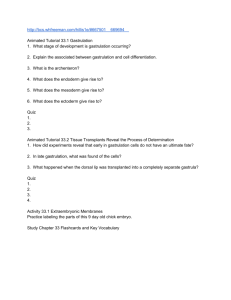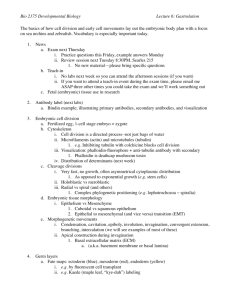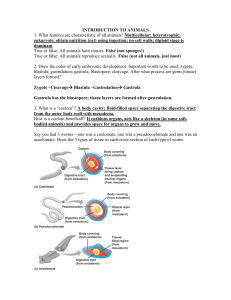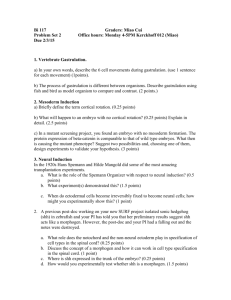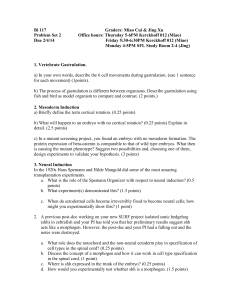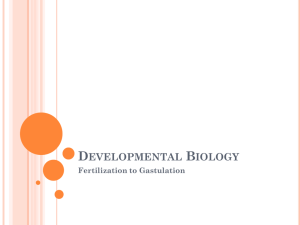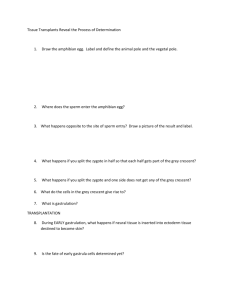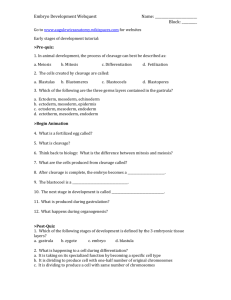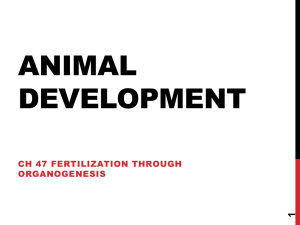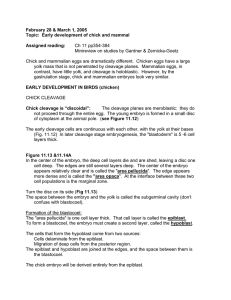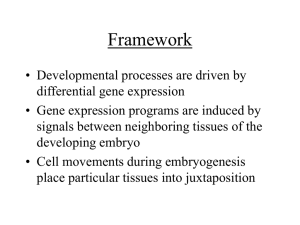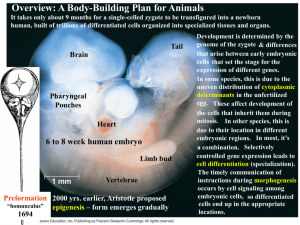Document
advertisement
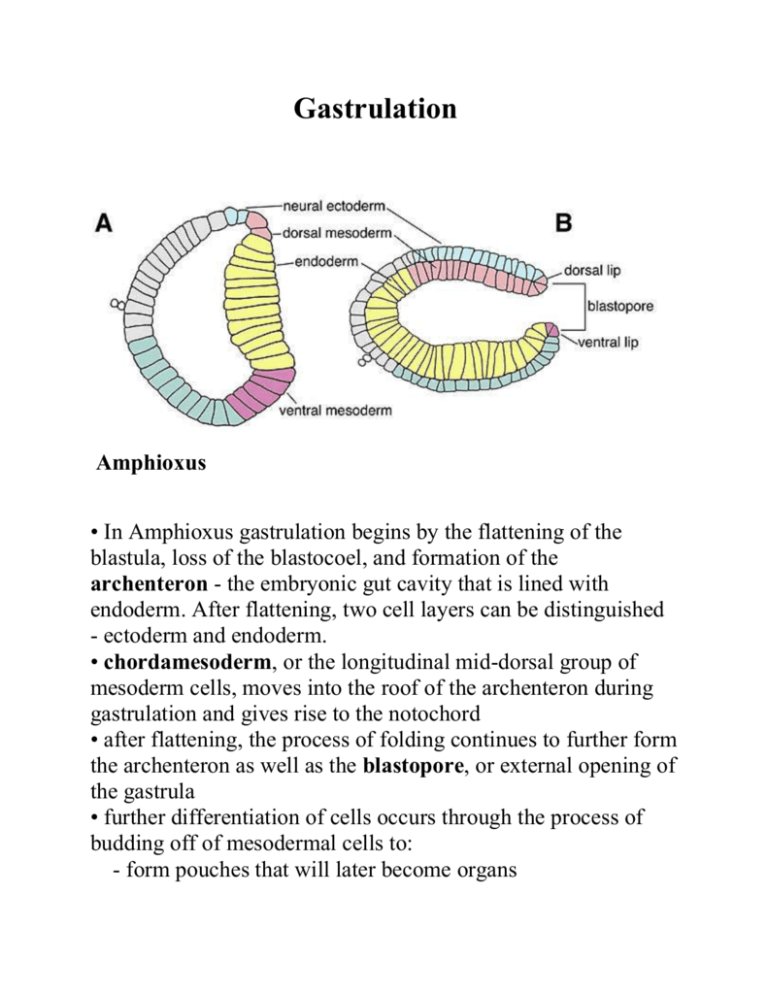
Gastrulation Amphioxus • In Amphioxus gastrulation begins by the flattening of the blastula, loss of the blastocoel, and formation of the archenteron - the embryonic gut cavity that is lined with endoderm. After flattening, two cell layers can be distinguished - ectoderm and endoderm. • chordamesoderm, or the longitudinal mid-dorsal group of mesoderm cells, moves into the roof of the archenteron during gastrulation and gives rise to the notochord • after flattening, the process of folding continues to further form the archenteron as well as the blastopore, or external opening of the gastrula • further differentiation of cells occurs through the process of budding off of mesodermal cells to: - form pouches that will later become organs - within these pouches are spaces that will become the body cavity or coelom - notochord formation proceeds with the condensing of the chordamesoderm into the notochord - the neural tube then forms from pinching of the ectoderm over the notochord Gastrulation in amphibians •In amphibian gastrulation is changed slightly due to the larger amount of yolk contained within the egg - the cells at the animal pole are retained for the formation of the embryo while the yolkfilled cells at the vegetal pole are used more by the embryo as an energy source • gastrulation is initiated by invagination of cells to form the dorsal lip of the blastopore • cell movements cause the pushing out of the ectoderm and inward movement of the endoderm and yolk-filled cells • the archenteron is formed and the blastocoel is slowly filled with cells and lost • the yolk-filled cells of the vegetal pole remain for a short time to fill the space between the dorsal and ventral lip of the blastopore, thus forming the yolk plug • the mesoderm gradually differentiates from the rest of the cells of the gastrula, as do the chordamesoderm cells which go on to form the notochord • the gastrula then progresses into the neural tube formation stage, called neurulation Gastrulation in birds with birds, we begin to see the meroblastic type of development of the embryos, significantly more yolk than in the previous examples, and the movement of cells is different as the cells lie more in sheets rather than in a ball. • two processes lead to cell movement in the chick embryo: - delamination: sheets of cells split into separate layers - ingression: individual surface cells migrate to the interior of the embryo • during delamination, two layers of cells form (the hypoblast and the epiblast) with a cavity in between that is comparable to the blastocoel in amphibians - separation of these two layers results in the formation of two regions of the blastodisk, the area opaca and the area pellucida • during ingression the primitive streak forms (a longitudinal thickening of cells along the blastoderm of large-yolked eggs) through which prospective chordamesoderm and mesoderm cells move inward - cells of the hypoblast are replaced by endodermal cells • the primitive streak lengthens along the surface of the yolk through ingression - the embryo grows longer and occupies more of the area pellucida • after gastrulation, the process of neurulation, or formation of the neural tube and associated structures, occurs
